It’s been over 5 years since the last console Zelda game released. A lot has changed with Nintendo during that time: Nintendo released the successor to the Wii (Wii U), Nintendo’s beloved President, Satoru Iwata, passed away, Nintendo promised ‘breaking the conventions’ of the Zelda series, and Nintendo announced/released another brand new system—the Nintendo Switch. Much like Twilight Princess, Nintendo’s latest Zelda adventure spans two devices: the Wii U and the Nintendo Switch. We’ll discuss some of the aspects of the Wii U version later on, but let’s get to know The Legend of Zelda: Breath of the Wild a bit better before then.
Let’s start our journey with the story in Breath of the Wild. Unlike previous Zelda games, the story in Breath of the Wild is told to the player in a fairly random order depending on where the player explores first. Previous games would progress in a preset way and cutscenes would happen along the way in a specific order. Breath of the Wild’s open world gameplay means players can digest the story differently depending on how they unlock the story elements in the game. It’s not a bad thing but this does mean that each story piece feels a little disjointed especially if you are like me and had 5+ hours of exploring in between each cutscene (cutscenes are fairly short, 2 to 5 minutes long). Voice acting is featured in a big way for the cutscenes and, for the most part, it’s executed fairly well. Some of the spoken lines were a bit off especially at times when there should be natural pauses and instead the character quickly moves on to the next thought. A jarring moment to hear but thankfully there were only a couple times I noticed that sort of an issue. Most of the emotional moments were very well done in my opinion. I won’t delve into the story too much but I wish there had been more depth added to some of the characters. Just before the player starts to care about a given character, the story seems to move on with not much mention of them after that. There were other aspects to the story that simply felt under-developed. All things considered, the story is one of a few low points in the game.
Before we get to some of the negatives in Breath of the Wild, let’s go in depth on the many positives. Beginning with the gameplay, Breath of the Wild takes Zelda in a whole new direction. The items in the game manipulate various aspects of the natural world. The Magnesis rune allows Link to interact with metallic objects, the Cryonis rune creates pillars of ice from water, and the Stasis rune manipulates the passage of time on a particular object. Players can even hit the object that is frozen in time to build up kinetic energy and release it to move very large objects and boulders. All of these items are great additions to the Zelda series and add a lot of depth to Link’s arsenal throughout the game both for combat and puzzle-solving. Going along with the items is the sheer amount of physical systems Link can interact with in the game. Weather effects such as rain, snow, lightning, and extreme cold/heat all create various challenges and opportunities for Link to traverse the world. Cooking is another great addition in this game. There are a ton of items Link can use to create different meals and elixirs (which provide various status effects). Recipes can be found throughout the world but it’s also fun to experiment with different ingredients.
The combat in Breath of the Wild has also seen some improvements. The game rewards creativity and combat has a lot of ins and outs for players to use. The shield parry is a super effective tool for ranged attacks from enemies like Guardians. Shield parries will reflect an attack back to the enemy and in most cases, kill the enemy in one hit. It can take some time to master, but it’s well worth the effort. The backflip and side jump also make a return but if players can execute the jumps right before an enemy attacks, they’ll initiate what’s called a ‘Flurry Rush’. This bullet-time mode happens right before an enemy’s weapon has the chance to brush your skin. Much like the Shield Parry, timing for this move is critical but rewarding.
By far the best aspect in Breath of the Wild is the world itself. It is the main character on display in the game and it is breathtaking (pun intended). From high peaks and roaring volcanoes to deserts and oceans, Breath of the Wild is an incredibly detailed open world. It’s also an extremely massive world but, unlike other open worlds I’ve experienced, Breath of the Wild’s world feels sculpted and well-crafted. There is so much detail to be found in the world it’s staggering. The amount of fun and enjoyment just from the exploration will probably eclipse your entire play times of the previous 3-4 Zelda games combined. You can spend 100-150 hours in the game’s world before seeing and accomplishing everything. A big part of that time comes from the many side quests the game’s NPCs offer. Players will find NPCs all over the world but most are localized in various towns and villages. Each town has a unique style and the characters are quite diverse. Some of my favorite moments in the game are simply exploring the ins and outs of each town and discovering the wide array of quests and characters.
And finally, the visuals in Breath of the Wild are stylized much like Skyward Sword and Wind Waker. I love the aesthetic and it works really well with the character designs in the game and with the world. The game does suffer from frame rate drops in several areas in the game. It’s nothing too critical but it can detract from the experience. The interface in the game is minimalistic and clean, but overall it’s easy to use and manage items. That wraps up the core positives of the game, so let’s move on to some of the negatives.
Let me say that I absolutely enjoyed my time with Breath of the Wild and think it does a lot of things really well. That said, some of the core reasons I love Zelda games are for their diverse and imaginative dungeons, unique bosses, and a number of different types of puzzles to solve. Unfortunately, Breath of the Wild really falls short for me in the dungeon department. Not only do all of the dungeons share the same aesthetic, their puzzles and boss battles are all very similar to the point where it felt like I was fighting slightly modified copies of previous bosses. There wasn’t much in the way of discovering a unique way to defeat them either. Almost any weapon did damage to the boss so it was just a little bit of trial and error to figure out the most effective one. Almost all of the bosses were fairly easy to beat—some of the overworld mini-bosses were more difficult (I’m looking at you Lynels). I know that Breath of the Wild is going into new territory for the Zelda series and I can respect that. But looking back on my experience with the game, I find myself with few highlights in the dungeons and more from just exploring the overworld. While I think that’s the intent of the game, it still left me a little disappointed. I try to be as objective as possible when reviewing games that are part of a larger series so I can’t solely base my review on my personal preferences with the series—some folks not enjoy the lengthy dungeons. I try to ask a few key questions in the case of long-standing franchises. Does the game improve upon the elements of previous games? Does it take familiar characters into bold new directions? How has the gameplay evolved? What was the goal with making this particular game in the series? Is the intent to stay with the usual formula or mix things up? That last question really stuck with me. The goal of Breath of the Wild is to try something new. To break down some of the preconceived ideas of what Zelda games should be. If that was the goal of the development team on Breath of the Wild, they succeeded and did a tremendous job. There are elements I absolutely love about Breath of the Wild: the world, the gameplay, the wide array of weapons / items and elements that I believe take a step back when compared to previous Zelda titles: lack of engrossing dungeons and bosses, weapon degradation, music, and story.
Overall, Breath of the Wild is an incredible game and one that takes Zelda games into a bold new direction. Is it everything I wanted from the latest Zelda game? Unfortunately no—I felt like the dungeons, while fun at first, became repetitive in their design, implementation, and bosses. I also felt like the story really trailed off towards the end of the game and Ganon’s characterization just didn’t seem complete. I hope that the Expansion Pass DLC can breathe some more life into the game’s story and answer some lingering questions I have, but as it stands right now, Breath of the Wild left me wanting more in some key areas. While I have issues with Breath of the Wild, the good elements far outweigh the bad and the game is still absolutely exceptional. It is definitely one of my favorite games of all time and is a must-play for any gaming fan, whether or not you have played a previous Zelda title.
Trevor Gould wraps up our review with some Wii U version notes:
The Legend of Zelda: Breath of the Wild is a great Wii U swan song! If you didn’t grab a Switch at launch, we’d definitely suggest buying the game for Wii U as opposed to waiting. Yes, the frame rate can be smoother at certain points, but the same can be said for the Switch port. Any claims of an “unplayable, slideshow” performance are simply hyperbole to the nth degree. Unless you’re quite sensitive to such things, you’ll likely be too entertained to even notice before long.
Both versions of the game are largely the same. The majority of the GamePad use originally highlighted has been eliminated for parity. It’s pretty clear it would’ve made the game even better, especially given the GamePad praise for The Wind Waker and Twilight Princess HD. While the lack of options disappoints, the gyroscope and Off-TV play (though not mirrored) still function.
One control oddity is that the Wii U box lists, in error, support for the Wiimote, Nunchuck, and Classic Controller Pro. These are all glaring typos! We reached out to Nintendo to receive clarification on this but sadly have received no answer at the time of publication. Rest assured, it’s a mistake.
One thing the Wii U has that you won’t find on Switch is Miiverse. The BOTW Miiverse community is incredibly active so if you enjoy sharing screenshots and experiences that way, you’re bound to appreciate it. Other than these we can’t think of anything else really worth mentioning, but feel free to leave us a question if you have one. Don’t feel like you’re missing out if you’re playing (or plan to play) BOTW on the Wii U, because you are not. It’s a great game on either Nintendo console.
Breath of the Wild Expansion Pass ($19.99) “Review” – added by Justin on Jan. 7, 2018
As I mentioned in my closing thoughts in my review of the base game (listed above), I was hoping the Expansion Pass might improve on some of the things I felt were lacking in the core experience. Unfortunately, and not too unexpectedly, the Expansion Pass inherits a lot of the same issues I had with the main game.
“The Master Trials” – DLC Pack 1
The Master Trials DLC Pack contains mostly quality of life changes and some added difficulty options. The Trial of the Sword adds a three stage gauntlet where each stage has 15 levels. Players must complete all 15 levels without dying to move on to the next stage. The reward for completing this lengthy trial is the Master Sword can now be used without its ‘recharge time’. While it’s cool the developers finally gave us a weapon that doesn’t degrade, it didn’t come as much of a ‘reward’ if you’ve already completed the Shrines and defeated Calamity Ganon.
Master Mode gives players a chance to play through the entire game again with increased difficulty and more enemy locations. Basic Red Bokoblins are now blue and all enemies recharge their health over time during battle. You will have to strike swiftly and often to defeat enemies in this mode. There are also floating platforms with enemies and treasures dotted around the landscape to add more challenge. This mode was simply not fun in my experience but it may be fun for those who like an extra challenge.
Hero’s Path Mode and the Travel Medallion are two new options aimed at helping players traverse the world more effectively. Hero’s Path Mode is a simple toggle on the game’s map screen that shows a line on top of the map indicating everywhere you have traversed in the game. If you are trying to find all of the Koroks and/or Shrines, this can be a great tool to find areas you haven’t yet visited. The Travel Medallion allows players to place an arbitrary warp point at their current location so you can easily warp back to it later–this can be helpful if you are exploring an area without any Shrines. I also found it useful to put on a high peak in an area so I had a good launching point.
The Master Trials also contains new armor pieces for players to discover via journal clues in various spots in Hyrule. These quests were actually pretty fun and I wish there were more like them. It would have been great to have more in-depth quests too. Overall, The Master Trials feel very much like a ‘New Game +’ with some modest new content.
“The Champions’ Ballad” – DLC Pack 2 (Warning: Spoilers below)
While the first DLC pack featured some decent content, The Champions’ Ballad DLC Pack promised a ‘new dungeon’ and more story-related elements. After my initial excitement wore off from playing the main Breath of the Wild game and the first DLC Pack, I was cautiously awaiting the second DLC Pack. My core disappointment in the main game stemmed from the game’s “dungeons” which, in my opinion, are paltry in comparison to traditional Zelda dungeons. While I was expecting more of the same types of dungeons in The Champions’ Ballad, I couldn’t help myself hoping that they heard my cries and decided to do a proper dungeon to close out the Expansion Pass content. I was left disappointed once again.
The Champions Ballad starts with players back on the plateau doing a series of combat challenges with a new weapon capable of vanquishing enemies in 1 hit. The catch? Enemies can also kill you in 1 hit. While initially frustrating, I actually enjoyed the change of strategy this new weapon afforded. Once the plateau challenge ends, players will go to a number of new shrines scattered throughout the landscape. There’s actually a decent amount of content and the shrines featured some much improved depth to them. After completing three shrines near each Divine Beast, players will go into the past to view a cutscene that offers a little more character development to Zelda and each of the Champions. Following this, players will have to fight the same boss from each Divine Beast (which felt like a chore for me seeing as how the bosses were one of the low-points I mentioned from the main game). After completing this repeat boss battle, players will receive an upgrade to one of their abilities given to them by the Champions in the main game (Mipha’s Grace, Daruk’s Protection, etc.). Basically it means each of these will recharge faster.
Once players finish all 12 new Shrines, a final ‘Divine Trial’ will open at the Shrine of Resurrection where the whole game began. This is the promised ‘dungeon’ from the early promotional material for the Expansion Pass. While not nearly as big and challenging as I had hoped for, this final dungeon offered a lot of cool puzzles. The interior of the dungeon was still the same aesthetic design from all the other Divine Beasts, but it was a decent send-off for the game. The final boss battle was finally a new boss, but as with other bosses in Breath of the Wild, can be defeated fairly easily with a number of different weapons.
The final reward players receive is the ‘Master Cycle Zero’ which is a motorcycle styled in the ancient Sheikah technology. While the motorcycle certainly looks cool, I found that once I received it, there wasn’t really anything left in the world I wanted to find. I would almost recommend new players complete enough of the Shrines and the Divine Beasts to unlock the DLC Pack 2 content. Then you can travel the world for the remaining Shrines on the Master Cycle Zero–otherwise it’s a bit of a shallow reward. Now, I should mention there are new pieces of armor to find and some new Horse gear so there will be some new things to find on your new ride even if you’ve completed everything.
Final thoughts on Breath of the Wild and its Expansion Pass
The Expansion Pass definitely adds some good content but it’s still content based on the same issues I had with the core game. In the end, I should’ve expected this and it’s not surprising the developers kept with the same experience. That doesn’t mean I still wasn’t disappointed and left wanting some of those traditional Zelda elements that I have always enjoyed over the years. The silver lining for me is that Nintendo is already working on the next Zelda game and I can only hope that it brings together the best of Breath of the Wild with the best of what I loved about prior Zelda games (epic dungeons, puzzle-like boss battles, unique, meaningful items/upgrades, and a compelling story from start to finish). I wouldn’t mind if they made the game’s world a quarter of the size of Breath of the Wild. While I enjoyed a lot of my time with Breath of the Wild and I certainly put more hours into it than any prior Zelda game, it didn’t manage to resonate with me as a great Zelda game.
Review: The Legend of Zelda: Breath of the Wild (Wii U / Switch)
Awesome
Overall, Breath of the Wild is an incredible game and one that takes Zelda games into a bold new direction. Is it everything I wanted from the latest Zelda game? Unfortunately no—I felt like the dungeons, while fun at first, became repetitive in their design, implementation, and bosses.

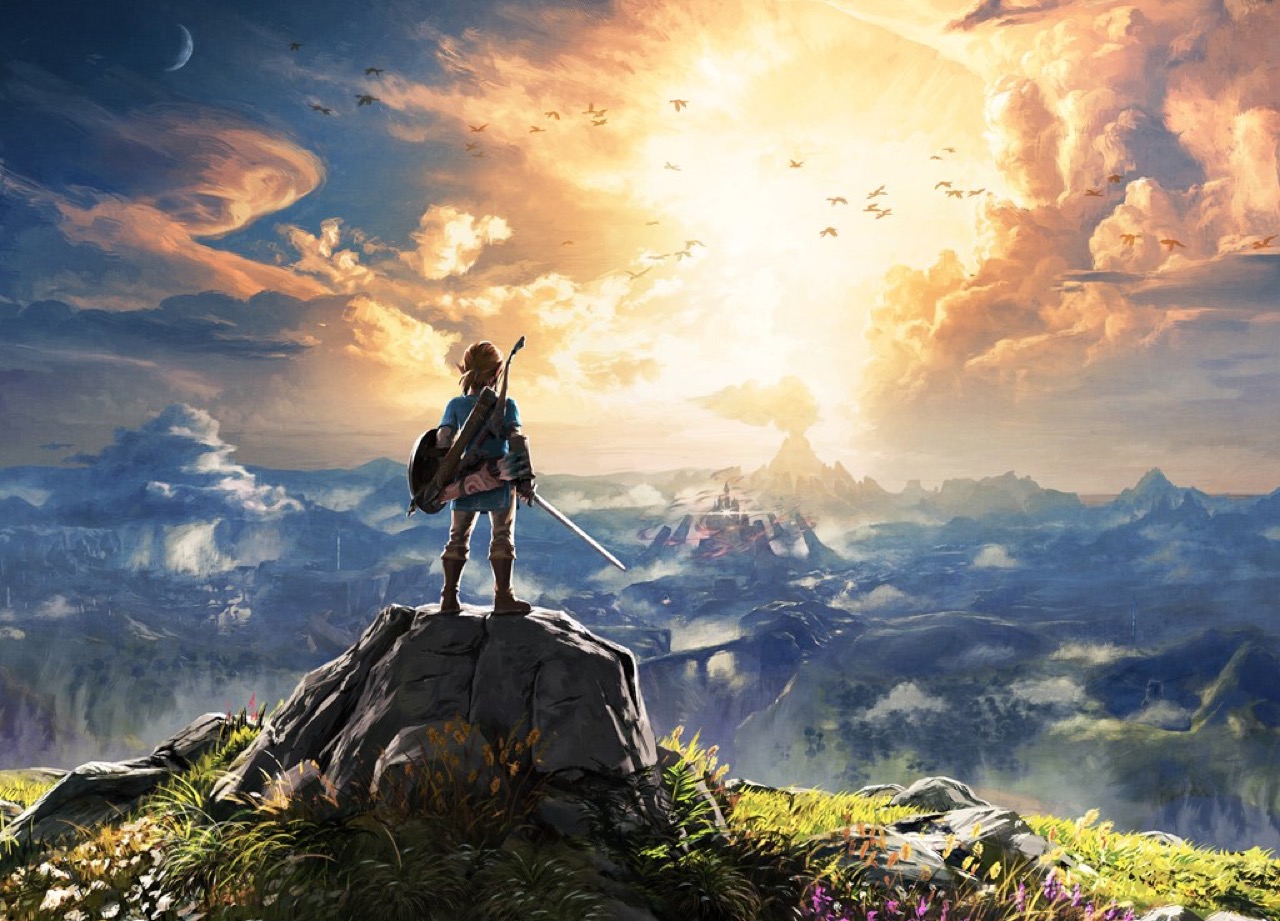


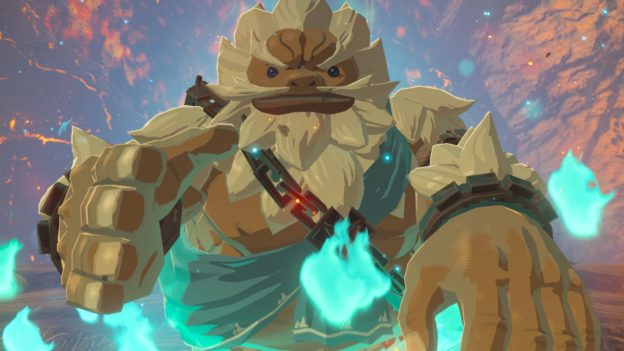

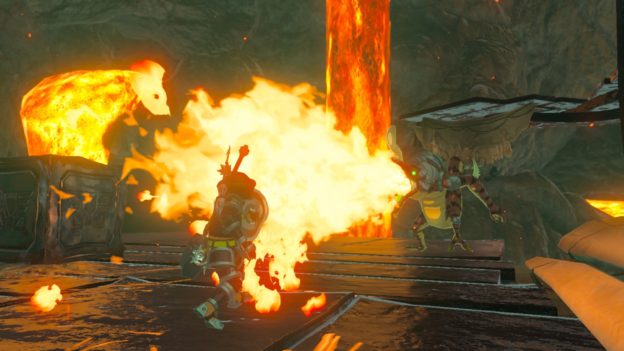





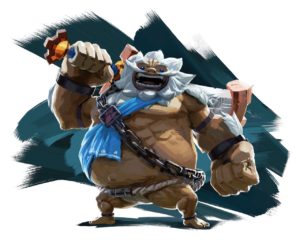

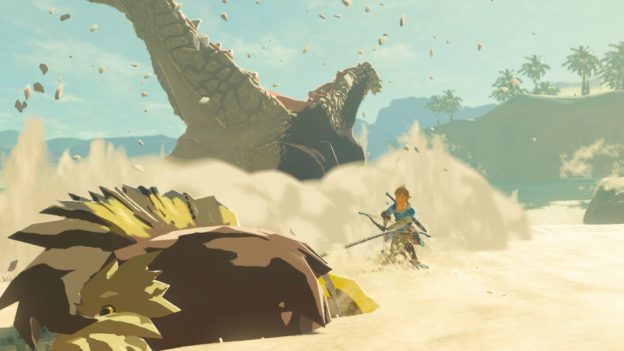




March 28, 2017
Only marginally better than Go! Go! Kokopolo 3D: Space Recipe for Disaster and just as good as Shantae: Half-Genie Hero
April 12, 2017
Surprised you gave it a 9.5. You listed quite a few negative aspects of the game. I was sure it would be in the 8-9 range. Either way I agree and love the game too.
January 14, 2019
[…] of the most played 21 games are first-party, with robust games like Breath of the Wild, Super Mario Odyssey, Mario Kart 8 Deluxe and even the recent release of Pokémon Let’s Go […]
January 29, 2019
[…] carries with it the weight of its age. It’s unfair to compare it to wide open games such as Breath of the Wild and Xenoblade Chronicles 2, or even more classically constructed JRPGs such as Ys VIII: Lacrimosa […]
July 17, 2020
[…] Breath of the Wild (Switch) – I’ve gone back to an old classic. It’s been great playing a familiar game and getting back into the world of Hyrule through the challenge of Master Mode. […]
November 27, 2020
[…] long as you possibly can reply affirmatively to the next query: Have you ever performed (and loved) Breath of the Wild? If that’s the case, you’ll possible get pleasure from this one, regardless of the Musou […]
November 27, 2020
[…] you’ll be able to reply affirmatively to the next query: Have you ever performed (and loved) Breath of the Wild? If that’s the case, you’ll possible get pleasure from this one, regardless of the Musou […]
November 27, 2020
[…] long as you possibly can reply affirmatively to the next query: Have you ever performed (and loved) Breath of the Wild? In that case, you’ll doubtless get pleasure from this one, regardless of the Musou […]
November 27, 2020
[…] so long as you can answer affirmatively to the following question: Have you played (and enjoyed) Breath of the Wild? If so, you’ll likely enjoy this one, despite the Musou […]
December 12, 2020
[…] so long as you can answer affirmatively to the following question: Have you played (and enjoyed) Breath of the Wild? If so, you’ll likely enjoy this one, despite the Musou […]
March 1, 2022
[…] The Legend of Zelda: Breath of the Wild (Wii U) – I used to be a bit beneath the climate this weekend, so I made a decision to dive again into this sport for the primary time in 5 years. The sheer size means it’ll in all probability present up on my subsequent playlist additionally. […]